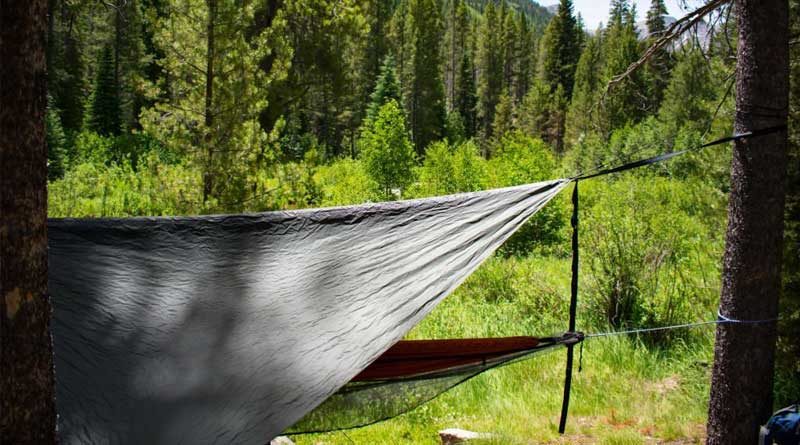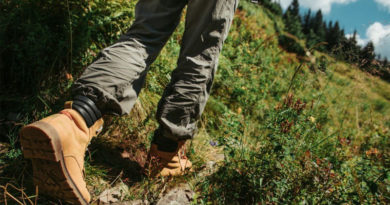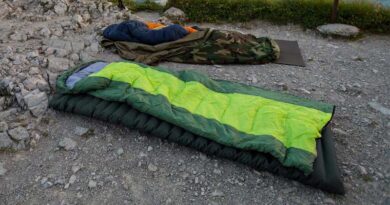Hammock vs. Tent Camping in the Rain
Camping in the rain is a great adventure. You have to make sure that your shelter system keeps you and your gear dry, otherwise, you would have trouble. A debate about tents and hammocks being better than each other has been raging on among backpackers since the dawn of time. But which one of these systems is a better fit for the rain? When it comes to rain, hammock camping is always a better idea. While a tent is a more common shelter system and has many benefits over a hammock but a hammock is better in the rain. A hammock keeps your gear dry and above the ground, which keeps your stuff safe and protected from puddles and water streams.
The Best Overall
This ancient debate of which shelter is the best doesn’t have a clear answer or a winner. It is completely subjective and depends on what you need and what suits you. Both shelter systems have their advantages and disadvantages.
Advantages of a Hammock
- The major benefit of a hammock over a tent is its minimalism. With a hammock, you don’t have to look for a flat piece of land that is large enough to compensate for the hammock. You find a couple of trees close enough and you tie your hammock to the trees. It doesn’t matter if there are sharp objects on the ground or if the ground isn’t flat. You are suspended above it all. Even your gear is suspended. In short, you don’t have to worry about the condition of the ground.
- Getting in and out of a hammock is easy compared to a tent. For most of the tents, you would have to crawl on all fours to get in and get out. But you can set up a hammock at a good height and just get in and out. It is especially good for old people and people who have problems with the joints of their legs.
- This point is sort of related to the point above. A hammock is great for people with back and leg pain. Because you are suspended on top of the ground, a hammock allows your back to have a good posture and be above the hard ground. A hammock also allows your feet to be elevated above your head which can be a blessing after a long and hard hike when your feet are swollen.
- A majority of people claim that hammocks are more comfortable than tents. We have also found that to be true. But comfort is highly subjective, so this isn’t exactly a pro but since most people report the same thing, then perhaps, this is true.
Disadvantages of a Hammock
- The major disadvantage of a hammock is that it can’t be used everywhere. While a hammock might save you from dealing with conditions of the ground, finding a spot for a hammock isn’t easy. Most parks and campgrounds are made for tent camping giving tents an advantage over hammocks. You have to have enough trees at the right distance to suspend your hammock. In a place without trees, like a grass plain or a desert, you would need a hammock stand. You can’t and won’t bring a hammock stand on a backpacking trip because they are heavy.
- Don’t be fooled by the minimalist look of a hammock. A hammock might be light but when you add the kit you require with a hammock, it weighs more than a tent setup. An ultralight hammock setup would still be heavier than an ultralight tent setup. The weight comes from equipment like the top and underquilt, the tarp, the straps, and the suspension which are not required with a tent.
- The next big issue with a hammock is the setup. All the equipment mentioned above, and more, requires a lot of time and effort to set up. While some of you might claim to enjoy the process, it can be a lot of work after a long and hard hike. The setting up becomes even more of a problem when you have hiked in the summer heat.
- The other major disadvantage that sways people away from hammocks is the privacy issue. With a hammock, you don’t have a lot of privacy. You are in the open, and if you are sharing space with people around you, then you will have a hard time with, say, changing clothes.
Advantages of a Tent
- The reason most people prefer a tent over a hammock is that a tent provides them with a small personal space of their own. It’s like a miniature home which you can set up the way you like. You can spread all your stuff given the space that you have and be comfortable within the walls of your tent.
- As mentioned above, most camping sites or areas are for tent camping giving tents an advantage over hammocks.
- Tents are lighter to carry than hammocks. You don’t have to carry any extra equipment to set up a tent like you would in a hammock. An ultralight tent setup would be lighter than an ultralight hammock setup.
- You can share a tent with two or three people depending on how big your tent is. Tent camping is a better option for couples. Hammocks also allow two people but it can get uncomfortable.
- Privacy is a major advantage of tents over hammocks. You have your personal space where you can be just the way you want. The privacy matter is especially helpful when there are a lot of people around which they happen to be at a campsite often.
- Setting up a camp is way easier than setting up a hammock. Some tents like some trekking pole tents are very easy and simple to set up. You get a nice shelter without putting much time and effort into it. If you are a lazy hiker who wants nothing to do with complex setups after a long hike, then a tent setup is for you.
Disadvantages of a Tent
- The obvious disadvantage of a tent setup is that you are affected by the conditions of the ground you want to camp on. Setting up a tent requires finding a suitable flat piece of ground. A lot of times you would have to clear the ground before you can set up your camp. If you don’t find a flat piece of ground with enough space, setting up your tent can become very tricky.
- Condensation is a huge problem with tents that you have to deal with. If you don’t take measures to counter condensation, you might wake up cold and wet in the middle of the night or at least in the morning.
- Campgrounds for tents are often crowded. If you get stuck with a lot of annoying people, they might ruin your camping experience.
What about the Rain?
While there are more disadvantages to having a hammock than a tent, things change completely when it starts raining. During rain, if I can, I would use a hammock instead of a tent. That’s my personal choice. But here are the reasons why a hammock is better than a tent in the rain.
- Remember that a hammock is suspended above the ground and you don’t have to care about the ground conditions? This is a huge advantage of a hammock over a tent in the rain. After or during rain, you won’t find a dry piece of land to set up your tent. Campsites often form puddles and thick mud. Having a hammock in such a case provides a great advantage. Once you suspend your hammock, it doesn’t matter if there is a stream flowing below it. Pitching a tent during rain can take longer than setting up a hammock because you might have to clear the ground.
- Pitching a tent during rain is a huge challenge without getting it wet on the inside. You can bring a tarp with your tent during rain but that would raise the weight of your backpack. Hammocks are set up under the trees with a hammock tarp for additional protection from the rain. The ground under the trees is usually relatively drier than the open ground usually used to pitch a tent.
- After you pitch your tent, puddles can form under your tent causing problems for you. During heavy rain, there is always a risk of your tent getting flooded. That risk is significantly reduced while hammock camping. All you have to do is make sure that your tarp is adequately secured. Gear slings allow you to hang your gear with your hammock under the tarp. Your gear hangs above the wet ground where it is more likely to stay dry.
- Keeping a tent dry from the inside is still a challenge even if you manage to pitch it before the rain starts. If you have to get in and out of your tent for small things, you will get your clothes and shoes wet. When you bring them back in, they will make your tent wet. During hammock camping, once you set up your tarp, it provides you with dry ground to move about depending on the size of the tarp. Even if you get wet, you can still hang your outer shell on a sling or the hammock strings so that you don’t get your hammock wet.
- Staying under the tarp with all your stuff suspended above the ground makes a hammock much easier to manage than a tent on wet ground. A hammock setup certainly has the upper hand over a tent set up when it’s raining.
Final Thoughts
While a tent may have many benefits over a hammock under ordinary circumstances, a hammock is better in rainy weather. With everything off the wet ground, you are more likely to keep things dry and manageable. A tent is pitched on the wet ground during rain making it harder to keep your tent and your gear dry.
Pitching a tent during the rain makes it even harder to keep everything dry and is difficult to manage. That is, at least, how it works for us. But in the end, it comes down to personal choice and how well you can manage a certain shelter system in the rain. If you prefer a tent over a hammock and can manage to keep it dry, then, by all means, choose a tent.




